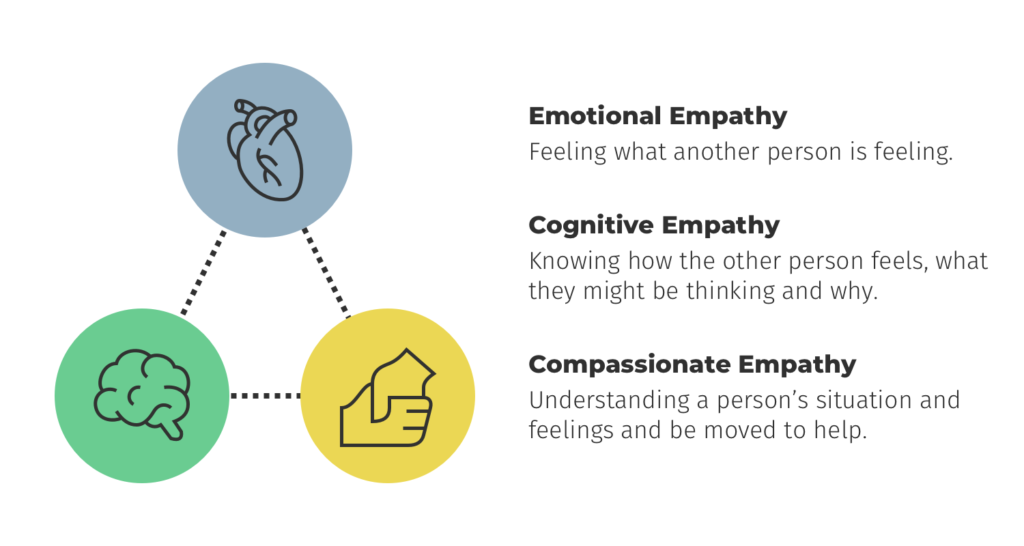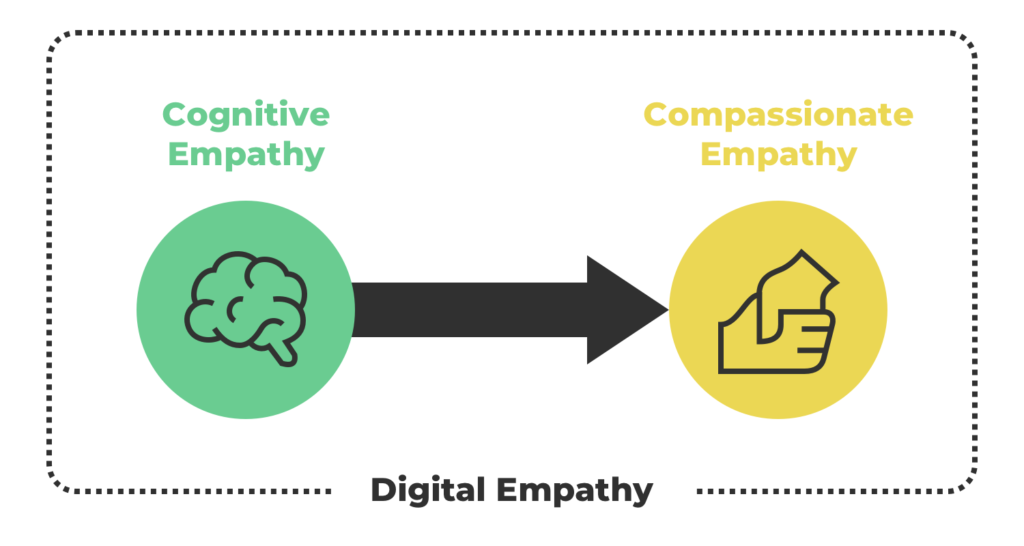エグゼクティブ・サマリー
ある研究によれば、感情は意思決定する際の主要な要因であり、感情がなければ私たちは決定することができない。 ある研究によれば、感情は意思決定する際の主要な要因であり、 感情がなければ私たちは決定することができない。 これは重要なインサイトで、事業を行う際に知らないではすまされない。 顧客が自分のことを伝える前に、その顧客のことを知っているとすればどうだろうか。 そして、カスタマー・ジャーニーの重要なタッチポイントで、これを毎日知ることができればどうだろうか。これがデジタルな共感であり、大規模な予測行動分析とともに用いることによって、企業は顧客にさらに共感することができ、社会的、経済的、環境的価値のトリプル・ボトムラインに持続可能でポジティブなインパクトを与えることができる。
事業を行うことは、受容と供給の正しいバランスを単に見つけることから発展してきた。 事業を行うことは、受容と供給の正しいバランスを単に見つけることから発展してきた。 今では企業は、利害関係者というエコシステム全体を倫理的なやり方で管理する必要がある。 顧客は、企業に顧客自身のことを知ることを日増しに期待している。 そして、共感(他者の感情の理解とそれに基づいた行動)が、ロイヤリティや再購入の最大の要因である。 未来志向の企業は生涯顧客価値が、獲得費用よりも極めて重要な指標ということを理解している。コロナウィルスの流行によって明らかになったのは、企業が生涯顧客価値の原動力を理解し、一生涯の関係をどう育てるかを知ることが、単なる顧客獲得より更なる成功をもたらすということである。
今日のほとんどの事業では、経営効率は必須となった。会社やブランドはコモディティ化した。 デジタル化へ突き進んで行くのとともに、 これにより多くの会社が顧客との関係のない領域で技術を発展させることとなった。 そして未だにほとんどのカスタマー・エクスペリエンス管理と顧客インサイトの手法は、現状に追いついておらず、デジタルが重要なものではなかった20年前の考え方に基づいている。
各業界の新たな勝者は、最も顧客の視点近く立つことができる会社となるであろう。 顧客がどこにいて、何を感じ、どう接してほしいかを理解する会社である。デジタル共感は黄金律を覆した。 顧客を自分が扱われたいと思うやりかたで扱ってはならない。そうではなく、顧客が欲するやり方で取り扱うのである。
Table of Contents
- エグゼクティブ・サマリー
- 対象とする読者
- 共感 – 顧客が感じていることを理解する
- 顧客の感情と決定を把握して形作る
- 共感とは、他者の考えや気持ちをその人の立場から理解する能力
- デジタル共感を実現する
- デジタルな環境での共感を得ることはできるのか
- The Data Analytics Perspective of Digital Empathy
- Treat customers like they want to be treated
- How to get started with Digital Empathy
- Case Study: Tried and tested at scale in Financial Services
- Conclusion: Making a business more humane
- Literature:
対象とする読者
以下の質問に1つでも「はい」がある場合、この白書をぜひお読みください。
- あなた個人またはお勤めの会社などで、顧客データを活用して実行可能なインサイトを導き出し、持続可能な収益改善に結びつけたいですか。
- あなたの会社は競合との差別化に苦労していますか。顧客はあなたの会社をパートナーではなく、他の会社と変わりないと見ていますか。
- NPSを使っていますか。使っているとすれば、顧客の行動に実際に影響するものが何かを理解するのに苦労していますか。
- センチメント分析を使って顧客の態度を判断していますか。使っているとすれば、それはあまりにシンプルまたはおおざっぱで、信用できないと思っていますか。
- マーケティング部門は、顧客が連絡して欲しくない時に連絡していますか。
- 会社は単に顧客を知っているだけですか。それとも実践的に理解していて、深く、価値のある関係性をもたらしていますか。
- 顧客がどう感じるかは、次にあなたが何をするかを決めるときに、何か関係がありますか。
- あなたのCX戦略は、顧客のニーズやウォンツに関するデータやインサイトに基づいているのではなく、信念に基づいていますか。
- マーケティングやカスタマー・エクスペリエンス管理に対する投資利益を理解していますか。
- 経営陣は、顧客インサイト、マーケティング、カスタマー・エンゲージメント戦略を完全に支持していますか。
- 顧客と従業員を共感的で人間味あるやり方でつなぎ合わせた場合、顧客のあなたの会社に対する考えは、期待しているものとは違うでしょうか。
倫理的なこと
Anthrolytics社は、データ処理を最も倫理的に応用することに傾注している会社である。 我々の志は、企業が顧客を維持することを支援することである。 製品やサービスに不満になった顧客を見つけ、早期に警鐘を鳴らすことができる能力を形成することで、我々の顧客がこのフィードバックに基づいて迅速に、心情的に繊細なエンゲージメントを実行できる。我々ができるのは、顧客の期待に沿わないことを取り除くだけである。 根本的に欠陥のある製品を変えることはできない。 要するに、我々のインサイトは顧客がブランドから享受する価値を改善し、懸念やストレスを和らげることだ。 誰もが得をする。
カスタマー・エクスペリエンス管理は、成功の犠牲となっていて、修正が必要である。
カスタマー・エクスペリエンスは新しいものではない。原理は前世紀の中頃に定められた。実際に1つの分野として評判になったのは、ロバート・ウッドラフが彼の著書「カスタマー・バリュー:競争優位性の次の源泉」を1997年に出版してからである。 今日、カスタマー・エクスペリエンス管理は、顧客中心的な組織の中心となるものである。 顧客中心は、非常に長いこと必勝法となっていて、これから更に長いことそうなるであろう。 事業が存在可能なのは、顧客があるからである。 顧客をよく理解するためには、インサイトと活用して将来を予測し、究極的には行動を予測することが事業を創造し継続する決定的な要因となるであろう。
20年以上も前にSatmetrix社のフレッド・ライクヘルドとベイン社のコンサルタントがネットプロモーター・スコアの手法を応用し、即座に成功を収めたものの、飛躍的前進とまでは言えなかった。 短く、最適な長さのアンケートが適切なタッチポイントで行われた結果、先進的な考えの会社が素晴らしいインサイトを持ち、顧客との関係、ひいては顧客生涯価値をも改善する機会が得られた。 要するに共感を示す機会が得られたのだ。 事業の主流に飛躍的前進をもたらすにはざっと15年かかった。 そして今やこの即席アンケートを使わない会社はほとんどなく、顧客の声や測定可能なものだけでなく不可能なものも含めたあらゆるタッチポイントの測定を行っている。
これはもちろん企業が顧客との関係を管理するのにいい方法である。 そして会社が発見したことを基に行動すれば、更にいい。 これまでネットプロモーター・スコアを使ってカスタマー・エクスペリエンスを活発に管理してきたやり方にはメリットがある。 それはスコアを使いすぎることなくそれだけにとらわれるのではなく、顧客との関係を管理する最善のやり方で、会社が顧客に関心があることを積極的に知らせ、組織にとってもよい学習の機会を提供するものである。 欠点はもし機械的に使いすぎ、指標を達成することのみに集中した場合、コンセプトは強みを失うことである。
行動、技術、そして消費者も過去20年で発展してきた。 ネットプロモーター・スコアのコンセプトは成功の犠牲となった。 元々関係を評価する測定法として短く一回きりのものだったが、今日では測定に値するものしないものに関わらずしばしば過剰に使われている。 多くの会社では指標が実際に意味するもの以上に重要なもとなってしまった。 顧客は定期的にアンケートがくることにうんざりしている。 結果として、顧客は大いにアンケート疲れしており、その回答は非常に偏ったものとなっている。 回答する人はたいていの場合、ハイテンションかフラストレーションがたまった人だ。 このため、適切なインサイトを引き出すのは簡単ではない。 大部分の重要な顧客は回答をあきらめている。 会社は顧客の状況がわからず、何が顧客を動かし、顧客生涯価値をどうやって増やせばいいかわかりようもない。
顧客の気持ちは確かに変わった。ただ、会社もCX手法もこの変化についていけてない。 今日のほとんどの事業において経営効率は必須となった。 会社やブランドはコモディティ化した。 事業はコモディティ化した。 これにより多くの会社が顧客との関係のない領域で技術を発展させることとなった。 デジタル化へ突き進んで行くのとともに、これにより多くの会社が顧客との関係のない領域で技術を発展させることとなった。そして未だにほとんどのカスタマー・エクスペリエンス管理と顧客インサイトの手法は、現状に追いついておらず、デジタルが重要なものではなかった20年前の考え方に基づいている。
共感 – 顧客が感じていることを理解する
人間は本質的に感情的な動物である。 意思決定はある特定の心の状態に大きく影響を受けている。 人が喜んだり感謝している時、ホルモンが分泌され、気分がよくなり、創造的になり、もっとそうなりたいと思う。 ストレスがあったり気分が悪い時は、ストレスホルモンによって戦いや戦闘的反射に集中できるが、ポジティブな記憶を思い出したり、新しい記憶を蓄えることを邪魔する。 こういった条件が意思決定を常に形作っている。 強い感情や、選択に迫られた場合、情報がない場合、複雑な問題に意味を見出そうと、人は皆精神的に負担の少ないやり方または「バイアス」をあてにしてしまう。
調査によれば共感がロイヤリティの最大の要因である。 デジタルでの交流がさらに増えるにつれ、会社の業務によって作り出される感情を理解するのは難しくなったが、顧客はまだ自分たちがどう感じているかを理解してもらいたいと思っている。 多くの会社がいまだに業務改善や努力の削減、摩擦を排除することに専ら注力しているが、これにより意図したのではなく顧客との関係を断ち切る結果となった。摩擦が少なくなった分、けん引力が失われたかもしれない。
共感は今ビジネスにおける注目の話題だ。お気に入りのサーチエンジンで共感とビジネスと調べれば、何千万もの結果が出てくるだろう。 多くの組織が共感が新たな戦場だと断言しており、これはカスタマー・エクスペリエンス(CX)の自然な発展と見ている。 デジタルな共感と予測可能な行動分析がデータサイエンスと行動科学の新たな融合で、人の行動を理解し、予測できる。 神経科学で証明されているように、人間の下す決定には感情が含まれている(人間の下す決定の全てが感情によるものということではない)。 しかし、この新しいアプローチは、私たちが状況をどう評価して決断を下すかに関わる幅広い要素を考慮している。
- 課題と背景(何が顧客を動かしたのか、顧客は何をしたいのか)
- 顧客のニーズは何か(価格や利便性など合理的な基準)
- 顧客のウォンツは何か(より幸せになれる、怖くないなど感情的な基準)
- バイアス(行動上または無意識なバイアス)
- 外部からの影響(おすすめ、レーティングなど)
- 個人的な経験(以前の履歴に基づいた顧客が期待するもの)
顧客の感情と決定を把握して形作る
顧客がブランドとの関係を断とうと決めたり、ロイヤリティを深めるチャンスを無視したり、熱烈だったのがニュートラルになる時、会社側はこのような決断は慎重に考慮されたり、合理的なものではないとわかっている。 企業は顧客がこういった決断に既に至り、手遅れな状況になって初めて気付くことがよくある。 顧客と関わりを持つチャンスは既に過ぎ、気付けなかった。 さらに悪いことには、去っていく顧客や不満を持った顧客は自分の不満をことさらにぶちまけ、製品の評判やブランドに悪い影響を与えるリスクが出てくる。 顧客が差別化されていない会社から別の会社に乗り換える障壁がほとんどない市場においては、顧客の感情的な状況を予測する能力や意思決定プロセスを把握し予測できることは極めて貴重である。 標準的なマーケティングでは、ストレスレベルを上げ、無関係でネガティブな反応を強めるか、関係を断ち切ってしまう可能性がある。
大きなチャンスがある。顧客が喜んでいるとしよう。こういった時あまりによくあるのが、ブランドはロイヤリティの基盤を更に強化するチャンスやアップセリングのチャンスを見逃してしまう。 同じように、顧客に不安や不平がある時、受身なやり方では自発性があまりなく、期待通りにことを正しく運ぶことができない。 顧客はシグナルを発しているが、たいていの場合それを把握して解釈するのは難しい。
デジタル共感の考えは、独特で根拠に基づくフレームワークを人間の意思決定モデルに埋め込んでいる。 その基礎は、カーネマン、ドバスキー、アリエリー、そしてチャルディーニの初期の著作にある。 そしてボイドのOODAループやマッキンゼーの7sやその他多くの有効なモデルをも含んでいる。 しかしデジタル共感の考えは他のどの行動科学をベースとした活動よりもさらに踏み込んだもので、知的財産や社会科学上のツールを生み出している。 例えば、極めて重要で極秘の活動のための行動研究を20年以上計画している。 製品やコンセプトは、営利事業、起業、内部セキュリティの懸案事項など幅広く用いられている。
共感とは、他者の考えや気持ちをその人の立場から理解する能力
カスタマー・エクスペリエンスと同様に、共感に関する議論も新しいものではない。大量生産とマスマーケティング(つまりコモディティ化前)の時代では、議論は製品の特徴や顧客にどう役立つかに集中していた。 その当時は、広告部のみが顧客がどう感じるかを気にしていたように思う。 他はみなよりよいものを作ることに忙しかった。当時のほとんどの経営陣は共感とは「人に感じよくする」ことで、現実的に実行するとなるとおそらく大金が必要になると考えていた。
「共感」は感じることができない。 共感は感情ではなく、 精神状態でもない。 共感とはおそらく技術(訓練や、組織文化から自由になることで得られる)だが、「彼らは本当に私に共感してくれた」と言ってミーティングやイベント終わらせる人はほとんどいない。 アンケートで聞かれれば同意するかもしれないが、そのようにフレーミングされた質問の場合、回答は信用できない。
過去10年程度、前線で働く社員への感情的知性(EQ)に関するトレーニングが大いに注目されてきた。顧客が何を感じているかを基本的に理解して、社員自身が何を感じているかを理解して、そのうえで会話をし、関係性を築くという技術である。 その当時注目されていたのは言語の使用と、その時点で次の最善の行動を促すものか、会話を分析して社員のトレーニングをサポートするものだった。

しかしながら、前線で働く社員へのEQのトレーニングを共感を実現する第一のモデルとしてあてにするのは大きな欠点がある。人間対人間の相互関係、例えばカスタマーサービスでの電話など、でしか役に立たない。 社員へのEQのトレーニングは、携帯電話、デジタル、オートメーション、セルフサービス型の取引などではほとんど改善を見ない。また、注目されてきたのは工程がいかに優れているか、高低を簡素化し簡単にするかである。 全てのルートで一貫して共感を実現するのは難しすぎると思われていた。
コロナ禍の影響で、多くの事業が業務の多くをデジタル化しなければならなくなり、結果としてカスタマー・エクスペリエンスは業務上の必要性から決定された。 回復が始まっている現在、デジタル化への投資の多くは、日々行われている顧客との交流においてますます発展していかなければならないだろう。 デジタル化への移行は回復へのレースとなり、レースは短距離走ではなくマラソンである。
カスタマー・エクスペリエンス管理の共感の核となるものは再建可能なのか。 共感とは会社が顧客を(できればダイナミックかつ正確に)理解し、(生産的かつ自由に)行動することができる能力である。 個人としての人間の根本的な活動において、多くの時間を人がどう感じるかを考えることに費やしているがよ く間違える。
だが、人間は神経化学によって決定することも知られている。 人は気持ちがよくなることを追求し、恥となることを避ける傾向がある。 上述のように、 望んでいないストレスがある場合、明確に考え良い決断をする能力は抑制される。 人が自分の話を聞いてくれなければ、怒るか会話をやめてしまう。 しかし、いかなる流通チャネルにおけるマーケティング、営業、広告も顧客の感情的傾向は見えてない。 会社は製品と提供し、我々はその効率性を測定する。 しかし、顧客がどう感じ、今がやり取りするのに最適なのかを考えてこなかった。
顧客の感情のインサイトは極めて重要だが、実際には難しい。 企業は顧客とのやり取りとそれに対する顧客のリアクションに関する最新のデータにアクセスできる(もしくは記録できる)。今や顧客の心の状態を予測できるのだ。 このローデータを照合し分析することにより、デジタルに共感しながら行動する能力が得られる。 こうして波長の合った役に立つ独自のやり方で顧客と関わりを持つことができる。
企業トップや経営陣、思想的指導者が(アクセンチュア、ガートナー、グーグル、その他の多くの最新のレポートに見られるように)共感力のあるリーダーが共感力のある組織を取り仕切り、顧客に共感を「伝えること」は重要だと言うのはたやすい。これはもちろん正しい。だが、ひとつ大きな問題がある。 顧客は「共感」を実感しない。 事業の持つインパクトを実感するだけだ。
共感とは事業のDNAに組み込まれていなければならない能力で、ブランドが顧客に提供するあらゆるタッチポイントに用意されなければならない。 共感は賢く進歩的な会社の隠し味で、会社は顧客のために戦略的、戦術的な共感を用意している。 企業による共感は感情的に波長の合った行動を保証し、行動が顧客側のポジティブな神経化学的反応(感情)を引き起こす。 顧客はその企業と完璧に近いやり取りを経験する。 これが顧客維持、顧客満足(NPSを思い出してほしい)、顧客と関係者がブランドの大使役を演じること、持続的な利益などを構築するのである。
デジタル共感は技術が推し進めるデータの照合と分析で、感情的な情報に通じ、波長の合った意思決定をサポートする。 戦略、マーケティング、営業、カスタマーケア、PR、経営陣によるコミュニケーションなど、デジタル共感により事業は転換し、鍛えられ、持続し、全ての顧客の感情による影響を早める。 言い換えれば、喜び、安心、達成感、満足、深い関与、耳を傾けてくれていると確認できることなどの、 顧客への神経化学的なインパクトを生み出すのである。
デジタル共感を実現する
これまで「デジタル共感」はユーザーエクスペリエンスとプロセスがどうデザインされたかを伝える設計手法だった(人間中心の設計の核)。 しかしながら今でも本当のところは「プロセスとしての共感」なのである。 新しいアプローチはハイパー・パーソナライゼーションの背景にある考えに更に近く、パーソナライゼーション(顧客について何を知っているか)がリアルタイムのカスタマイズ(顧客がなぜ、何をしようとしているか)に出会うことである。
共感の構成要素は様々な情報や行動予想分析から集められたデータによってもたらされる。つまり、一人の顧客が感じて、次に何をなぜやるだろうかということを予想することである。
このような行動に関するインサイトは、ついでJourney orchestration、キャンペーンの管理、enable process automation (RPA/RDA)などの運用上の様々なタスクで使われる。 このような決定や行動は顧客がどう感じているかやどのような機能を必要としているかによって一部知ることができるところが違う点である。
例えば、モバイルキャンペーンである基準を満たした顧客セグメントを対象としたが、いくつかの顧客は標準的なキャンペーンよりも別のキャンペーンに反応する可能性が高いため、別の扱いを受けた。 コールセンターで、興奮した顧客からの電話を、経験値が高くEQの高い担当者に回すことがあるが、通常の電話は普通の担当者に回される。
顧客にとっては、組織は人間のような感じを受ける。顧客の日常生活に理解があり、時機を逸したマーケティングメッセージを受け取らなくなり、受け取るオファーは心に響くものとなり、組織は顧客が欲しいものや、いつどうやって欲しいかを傾聴し予測するのがうまくなる。
デジタルな環境での共感を得ることはできるのか
ビジネスモデルの設計、つまり製品やサービスの設計の賢いやり方は、顧客の視点で見ることである。 顧客以上にカスタマーニーズについて語ることができる人はいない。 同様にこうすれば会社が強力な競合優位性を得ることができるインサイトへと導くことができる。

顧客がどう感じ、何を考え、その理由(認知的共感)を知る、顧客が感じていることを感じる(感情的共感)、突き動かされて助けるレベルまでに顧客の状況や感情を理解する(同情的共感)ことができる能力は才能であり、決して簡単なものではない。
他者の感情の理解と気遣いはコミュニケーションと社会的交流の土台となってきた。 顔を合わせての交流では、共感が幅広く浸透している。 しかし、従来の考え方ではコンピュータを利用したコミュニケーションを通して共感を経験することは、顔を合わしてのコミュニケーションよりも難しいと言われている。
これはボディランゲージや音声的の性質など人間関係を確認するきっかけとなるものが減ることにより、伝達される情報量の減少、親和的な交流が妨げられるが主な要因と一般的に言われている。 よく知られているように、声のトーンにより聞き手の発言の解釈が全く変わることがある。自信あるジェスチャーにより自信に満ちた態度が伝わり、商取引がまとまることがある。
オンラインのアプリや店があふれた世界でこれから何が起きるのだろうか。 顧客が何をしたいかを知って体験することができるのだろうか。 このデジタル時代にこれまにないほど技術が発展してきた中で、顧客同士は互いに距離ができ、企業とも距離ができるのだろうか。 そうかも知れないし、 そうではないかも知れない。
しかしこの主張を額面どおり受け入れると人間性は実際よりも激減することになる。 社会的存在としての人間は、驚くほどもっと複雑で、私たちが支持する唯一の真実は、人間に関しては普遍的な真実などないということで、 これは人間を顧客と言い換えられる。
長すぎる間、理想化された精神的なモデルが顧客はどうあるべきか、どう振舞うか、そして結果的に製品やサービスの成功をある財務的なまたはその他のパフォーマンス上の数値、例えば売上伸び率や製品の知覚品質などで判断されてきた。
これはこれらの指標がもはや重要ではないと言っているのではない。 単に今日においては、これらは持続可能なカスタマー・エクスペリエンスやビジネス上の価値を理解し創造を追求する上で不十分ということである。 成長することは現状に挑戦することである。 成功を測定する新しい物差しが必要で、デジタル共感がその失われたリンクの1つだということがわかってきた。
There is plenty of evidence to support that Digital Empathy is not only possible but that it attends to conditions that are specific to computer-mediated communication. For example, research shows that, while it may take longer, individuals develop empathic relationships which in some cases could be even more intimate than face-to-face interactions. One reason for this lies in that for some individuals, increased anonymity and distance work to reduce inhibitions, facilitating more personal disclosures and leading to the achievement of greater empathic connections.
Furthermore, individuals compensate for the lack of nonverbal cues by relying on alternate ways to communicate emotion, such as the use of emojis. Some may feel confused by some emojis, but most of us understand and agree that 😊 expresses joy, while ☹️ expresses sadness and 😠 expresses anger. Further research has also shown that emoticons can be used to express humor, as well as to strengthen the intended message.
The above arguments work to show that learning to recognize, understand, feel, and communicate emotions in the digital space is already an essential skill for any business, and even more important given the massive role played by the Internet in the age of coronavirus.
A customer who feels understood and supported is more likely to become a loyal customer. This is because intuitively, customers will tend to gravitate towards products and services that are designed to be sensitive and understanding towards their personal needs and circumstances.
And businesses need to rediscover and ethically capitalize on the power of the human touch in a world that has gone digital. Ultimately, Digital Empathy is about empowering businesses to embrace a new dimension of their potential and step into greatness to deliver exceptional experiences for their customers.
The Data Analytics Perspective of Digital Empathy
人工知能(AI)や機械学習(ML)は多くの人々を魅了してきたが、その恩恵を受けている人は少ない。「誰もが天国に行きたいが、誰も死にたくはない」のだ。多くの企業が大きな夢を抱いてムーンショット 計画に投資するものの、その大半は、期待に応える力量のないコンサルタントに頼っているのが実情である。こうした意味で、企業が挫折する主な理由の一つは、「ムーンショット(壮大な試み)」を支えるソリューションが科学的根拠を欠いていることだ。ムーンショット目標は、市場で進められているどのプロジェクトよりも遙かに大きい、あるいは展望の明るいものであり、何ら問題はなさそうに思える。しかし、このプロジェクトが高収益を生む画期的なものであるという約束は、適切な人材と適切なツール、そして適切な量の努力によってのみ果たされる。
Used in the right way, Artificial Intelligence and Machine Learning can help transform for the better. Artificial intelligence and Machine Learning systems can be used for a wide range of tasks, such as pattern recognition and anomaly detection, data mining, predictive modeling and analytics, conversational systems, and customer segmentation, just to name a few. One of the areas where Artificial Intelligence and Machine Learning have shown particular capability is in the area of facial recognition and text-based emotion and sentiment analysis.
Novel combinations of methods and collaborations in machine learning (deep learning), computational approaches and computer graphics, mathematics and simulations, predictive analytics, and behavioral science, to develop real-time computational models that can detect and learn human emotion and behaviors. Companies and their customers are very diverse and unique and have certain ways of thinking, feeling, and acting. There is no such thing as an average client or customer. While there are some basic patterns of individuality, people and their behaviors are complex and cannot be reduced to a simplistic one-dimensional measure. Instead, when looking at companies and their customers as a whole entity, within their multiple dimensions, a Digital Empathy project can provide tailored solutions that accommodate all unique circumstances.
Digital Empathy builds competitive and strategic advantage by transforming customer data into actionable knowledge via building:
- Algorithms and systems to help your business detect and predict the emotions you create in every customer every day.
- AI solutions to help your business detect customer satisfaction so that you can maximize it, as well as customer dissatisfaction, so that you can reduce it or eliminate it altogether.
- Recommendation systems that increase personalization and humanize customer engagement.
- Data-driven customized plans that take into account your customers’ profiles.
Treat customers like they want to be treated
At Anthrolytics, we would argue that “customers don’t experience empathy, they experience the impact of the business having it”. It’s absolutely a good thing that empathy is now widely recognized as vital to the modern, socially-aware business which wants to engage with customers and stakeholders in a meaningful, ethical and high-impact manner.
It’s not such a good thing that the term has become very much a fixture of those offering consulting founded on the classical mainstays of consumer psychology, re-treading approaches which have largely failed to improve the employee experience. The key reason why these efforts have failed before? Mainly because they lack conceptual capital. Relying on Maslow’s hierarchy of needs, various psychometric approaches and assorted metrics of varying reliability won’t cut it. Conceptual capital refers to the fact that any organization has to have a robust and bespoke understanding of what it is they are attempting to do and why. Hence, anyone offering to help a business ‘become empathetic’ needs to be challenged on precisely h=what they understand the impact of this to be.
When we think of a company being empathetic in its CX activities, what we really mean is that the customer (whether being engaged on an inbound, outbound, reactive or active basis) has received messaging and behaviors that have created a desired emotional effect. Has the customer “felt us” or “had the feels” for the brand as a result of amazing service, instant solution-generation …. or something else? Listening to a complaint and neither validating nor resolving it is not empathetic. Passing a customer to another department who ‘might’ be able to help is not empathetic.
But the customer comes away with a refreshed emotional commitment to the brand: that’s the result of a touchpoint with an empathetic organization delivered by a skilled and liberated service agent (or bot). Creating surprise, joy, astonishment, or delight – making a customer’s day: that’s emotion. That’s value. That’s loyalty and organic promotion with an enhanced NPS score right there.
However, all of the above emotional effects (at the neurochemical level) are the emergent property of deep, data-driven, authentic, and tailored digitally-empowered empathy. Complicated but not difficult – complicated because so much of the business may have to be re-engineered to allow it to deliver the surprise, joy, astonishment, delight, day-changing impact ….. but, as they say, we have no choice but to re-engineer. Whether in micro-retail or at scale, we need the authenticity of genuine emotional connections with real people from real people. As Lt.Col Shannon of the US Marine Corps (made famous in ‘The Men Who Stare at Goats’) declared: ‘We have no choice but to be wonderful’.
How to get started with Digital Empathy
Using Digital Empathy in Practice and at scale starts with Predictive Behavioral Analytics, combining data science with behavioral science to understand and predict human behavior. It does this by identifying what people really care about and why – what matters enough to them that it influences the actions that they take. These insights are then used to build a library of events that are known to subtly influence customer behavior. By combining this with an understanding of a person’s current mindset, it’s possible to predict what decision they will probably take next – when one of those events occurs and to act accordingly. The big difference with predictive behavioral analytics is its ability to do this at granularity at scale, at speed, and frequently.
Digital Empathy lays also the foundation for an additional way to segment customers. Legacy segmentation methods approximately fit a group of customers but rarely fit a specific customer. Most companies apply a segmentation approach that uses one or at best two dimensions. While demographics and psychographics allow you to define the big segments people generically fall into, Empagraphic Segmentation allows you to identify where they are at specifically.
While lots of solutions offer segmentation based on transactions or customer journeys, Digital Empathy adds the important third dimension: allowing to predict the likely emotional state of customers and the likely behavior this is likely to drive. This new dataset allows delivering the right message, to the right person, at the right time developing loyalty in your customers, and achieving sustainable business results.
For leaders and strategists, Digital Empathy turns a Customer Experience (CX) vision into a practical, disciplined business strategy, with directly quantifiable results on the top and bottom line, as well as the ability to balance the cost and rewards of competing strategies.
Digital Empathy can be embedded within operational systems, providing automated decision-making on the basis of the optimal next best action to take at the individual customer level. Furthermore, it allows organizations to be proactive – anticipating customer behavior (rather than just responding to it).
The result is a customer experience that feels more ‘human’ and in touch with their needs – one for which they will pay more, be more loyal to, and recommend. Whilst human behavior is too complex and messy to ever model perfectly, this new approach gives an organization a new and pragmatic tool for thinking about your relationship with all your customers and for making better decisions.
These are all factors that contribute to a fast Return-On-Investment. And btw.: This also can increase brand value; gaining a competitive edge that is very hard to copy.
Case Study: Tried and tested at scale in Financial Services
The concept of Digital Empathy was applied when integrating a managed service that provides advanced intelligence on customers who are becoming likely to defect. And how the Financial Services Company will know best how to act to retain. A Predictive Behavioural Analytics (PBA) engine was developed to generate accurate and actionable intelligence on the emotional status of every customer. This Emotional Intelligence Score (EQS) provided the client with strategic insight to refine, pause or accelerate planned marketing, advertising, public relations, or pricing activities. Customer contact centers also have a live feed of customer EQS so that agents can have a richer appreciation of the mood of a customer, connect to or respond with them using alternative scripts, escalation paths, and retention solutions accordingly.
By predicting the Emotional Intelligence Score of customers, it was extrapolated that their decision-making is beginning to become less rational and much more shaped by hormones and neurochemicals. These include cortisol (stress), adrenaline (stress/excitement), and then those which can create or retard happiness and satisfaction: dopamine, oxytocin, serotonin, and endorphins (CA-DOSE). Knowing that certain customers have moved to misperceive the company gives organizations the inside track to creating meaningful touchpoints.
These proactive touchpoints must reduce or eliminate the hormones and neurochemicals now suffusing all of the decision-making of the customer. Radically generous, wildly thoughtful acts and surprising engagements for customers Without these emotionally-tuned engagements, customers will double-down on their decisions, probabilities become certainties in their minds and they invisibly become irretrievable.
The results from the pilot were overwhelming: Applying the concepts and using AI and Machine Learning to deliver Digital Empathy at Scale, allowed this Financial Services Organization to:
- Increase its specific revenue by 17% thanks to better targeting and talking to customers at that time when they were most receptive to the offer.
- Decrease its marketing cost by 38% through a better focus and a stronger empathetic approach to segmenting and targeting, providing a more personalized and more relevant experience to customers.
- Reduce churn by 10% thanks to the ability to identify customers who were likely to churn, but were still saveable.
Conclusion: Making a business more humane
The idea of Digital Empathy as ‘the next best thing’ in making products or services stand out from their competitors and in improving customer experience through meaningful, ethical, and authentic interaction is deeply alluring. What has been achieved in this field so far is just the tip of the iceberg. Imagine the possibilities!
Digital Empathy enables companies to meet customers where they are by turning the Golden Rule on its head. Instead of: “Treat customers the way you want to be treated yourself”; it applies: “Treat customers the way they want to be treated themselves.” That philosophy is a significant shift and very important for doing business. While too often, segmentation approaches today are being designed inside-out, in some good cases also based on demographic criteria such as age, geography, or buying power and in some very good cases on past behavior. Their emotional state is too often neglected. Digital Empathy takes the emotional state into account to build the right offerings and manage the relationship in a humane way accordingly.
Neuroscience has shown that emotions are the fundamental driver for taking decisions. Understanding this will provide you with hard facts. It also allows you to design new approaches on how to manage a customer relationship. You will be better able to meet customers, where they are. Digital Empathy practically applied allows you to gain customer insights in a way that was not possible before. Digital Empathy also allows you to provide a Customer Experience that is superior as it is more specific to each customer: More personalized and more humanized. These are all factors that contribute to a fast Return-On-Investment. Faster identification of an account at risk and a competent recovery of the customer relationship can immediately translate into hard money.
Many companies have had a strong focus on digitalization over the past years. The COVID situation has sped up the thrive of customer interactions that are less personal. And many companies have outsourced important customer interactions, losing the human touch completely. Still, while everything has been digitizing fast; it is human elements that continue to make the difference. Whether in a Business-to-Business or in a Business-to-Consumer relationship; we are all humans. We have specific needs and wants; and also very specific emotions depending on the situation we are in right now. By understanding this and treating this with acceptance and respect we can build a better, more sustainable business that is creating value for its customers, employees, and stakeholders in general.
London, Zug, San Diego, July 2021
Literature:
- Ariely, Daniel (2008). Predictably irrational: The hidden forces that shape our decisions. HarperCollins Publishers.
- Bahadur, Waseem & Aziz, Saira & Zulfiqar, Salman. (2018). Effect of employee empathy on customer satisfaction and loyalty during employee-customer interactions: The mediating role of customer affective commitment and perceived service quality. Cogent Business & Management.
- Boyd, John R. (3 September 1976). Destruction and Creation (PDF). U.S. Army Command and General Staff College.
- Channon, D.F., (deceased) and Caldart, A.A. (2015). McKinsey 7S model. In Wiley Encyclopedia of Management (eds C.L. Cooper, J. McGee and T. Sammut-Bonnici).,
- Cialdini, Robert B. (2007) Influence: The Psychology of Persuasion.
- Damasio AR. (1994) Descartes’ error: Emotion, reason, and the human brain. New York, NY: Putnam
- Derks D, Bos AE, von Grumbkow J. Emoticons in computer-mediated communication: social motives and social context. Cyberpsychol Behav. 2008 Feb;11(1):99-101. doi: 10.1089/cpb.2007.9926. PMID: 18275321.
- Jiang, L.C., Bazarova, N.N. and Hancock, J.T. (2011), The Disclosure–Intimacy Link in Computer-Mediated Communication: An Attributional Extension of the Hyperpersonal Model. Human Communication Research, 37: 58-77. https://doi.org/10.1111/j.1468-2958.2010.01393.x
- Kahneman, Daniel (2011). Thinking, fast and slow. Farrar, Straus and Giroux.
- Kahneman Daniel, and Tversky, Amos (1982). Judgment under uncertainty: heuristics and biases. Cambridge, Cambridge University Press.
- Lerner, Jennifer & Li, Ye & Valdesolo, Piercarlo & Kassam, Karim. (2014). Emotion and Decision Making. Annual review of psychology. 66. 10.1146/annual-psych-010213-115043.
- Reichheld FF. The one number you need to grow. Harv Bus Rev. 2003 Dec;81(12):46-54, 124. PMID: 14712543.
- Scherer, K. R. (2005) ‘What are emotions? And how can they be measured?’, Social Science Information, 44(4), pp. 695–729. https://doi.org/10.1177/0539018405058216.
- Walther., Joseph B. Relational Aspects of Computer-Mediated Communication: Experimental Observations over Time. Organization Science 6 (2) 186-203 https://doi.org/10.1287/orsc.6.2.186
- Woodruff, R.B. (1997) Customer Value: The Next Source of Competitive Advantage. Journal of the Academy of Marketing Science, 25, 139-153. http://dx.doi.org/10.1007/BF02894350


